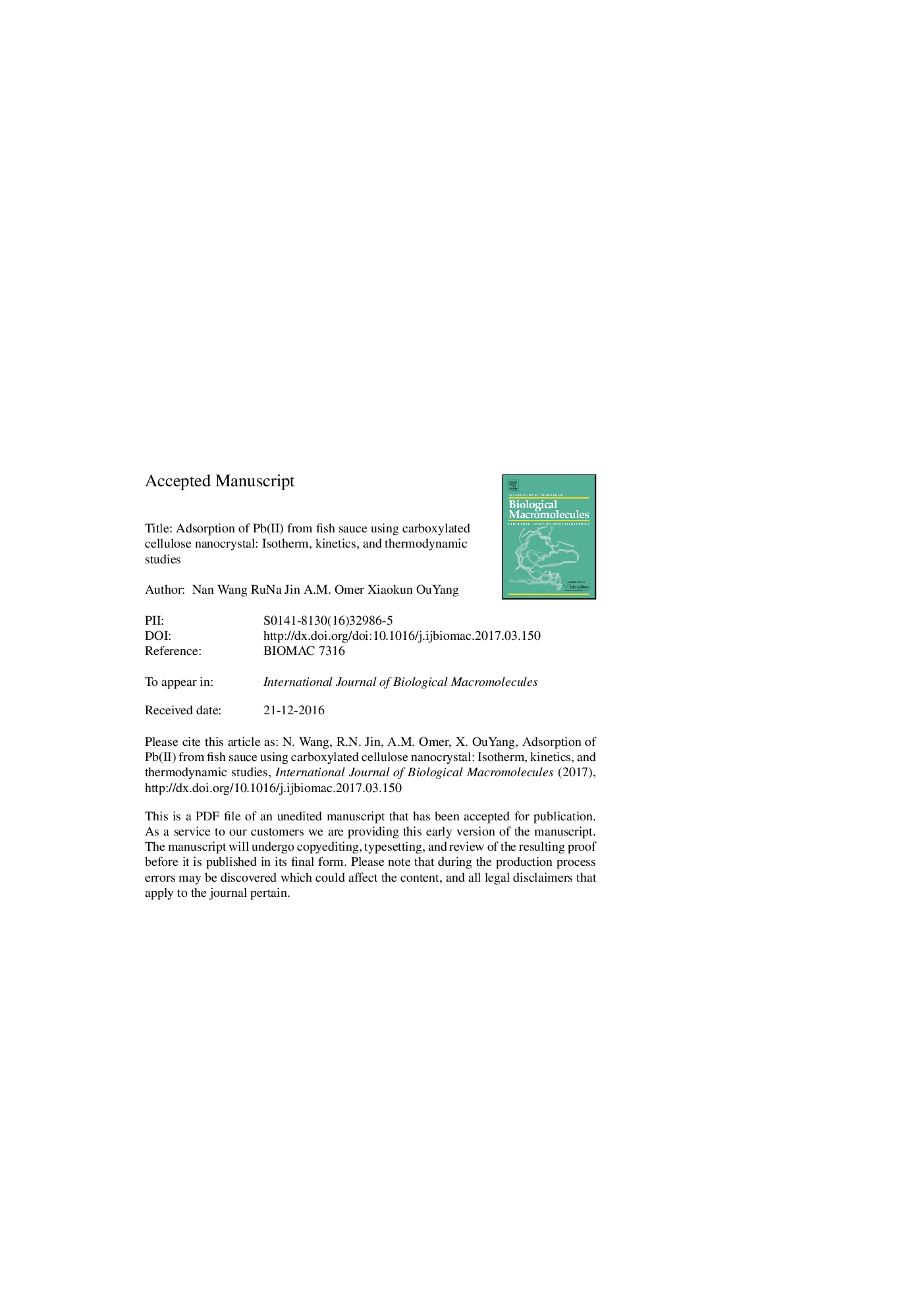| Article ID | Journal | Published Year | Pages | File Type |
|---|---|---|---|---|
| 5511747 | International Journal of Biological Macromolecules | 2017 | 45 Pages |
Abstract
In the present study, a new adsorbent based on carboxylated cellulose nanocrystal (CCN) was developed for the adsorption of Pb(II) from fish sauce. The prepared adsorbent material was characterized by zeta potential, FT-IR, XRD, and XPS tools. The changes in the morphological structure of the developed CCN surface were evidenced by SEM and TEM. The favorable adsorption conditions were selected by studying the contact time, initial concentration, temperature, and concentration of the used glutamic acid and NaCl. The results indicated that the Langmuir isotherm model agrees very well with experimental adsorption data (R2Â =Â 0.9962) with a maximum adsorption capacity 232.56Â mg/g of Pb(II) at 293.2Â K. Additionally, data of the adsorption kinetics follow the pseudo-second-order kinetics (R2Â >Â 0.9990). On the other hand, the thermodynamics studies show that the adsorption process is spontaneous and endothermic. Furthermore, the developed CCN could be regenerated using acid treatment with a good reusability for Pb(II) adsorption. The results clearly indicated that the synthesized CCN could be effectively applied as a new material for Pb(II) adsorption from fish sauce solutions.
Related Topics
Life Sciences
Biochemistry, Genetics and Molecular Biology
Biochemistry
Authors
Nan Wang, Ru-Na Jin, A.M. Omer, Xiao-kun Ouyang,
